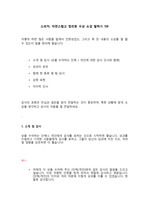FINDINGS IN THE APPLICATION OF THE DIMENSIONALITY AND MEASUREMENT OF ATTACHMENT IN BRAND CONTEXT: NIKE CHINA’S CASE
* 본 문서는 배포용으로 복사 및 편집이 불가합니다.
서지정보
ㆍ발행기관 : 글로벌지식마케팅경영학회(GFMC)
ㆍ수록지정보 : Global Marketing Conference
ㆍ저자명 : Ning (Chris) Chen
ㆍ저자명 : Ning (Chris) Chen
영어 초록
Academic researchers have conceptualised and studied consumer-brand relationship and individual-place relationship in parallel in branding literature and environmental psychology research. As a construct that describes the strength of the bond connecting an individual with an entity, attachment receives great attention, due to its potential in affecting behaviours that may assist in marketing and promoting this entity (not limited to repeat purchase) (Park, MacInnis, Priester, Eisingerich, & Iacobucci, 2010). For example, research in branding literature finds that the strong attachment to a brand indicates a private relationship between consumers and brands and further leads to developmental commitment (Fournier, 1998), energetic word-of-mouth behaviour (Sommerfeld & Paulssen, 2008), and apparently loyalty (Thomson, MacInnis, & Park, 2005); in internal marketing studies, brand commitment is found influencing employees’ brand citizenship behaviour intentions (e.g. Morhart, Herzog, & Tomczak, 2009); research on brand ambassadors explores how they would influence other potential consumers in a general consumer-to-consumer (C2C) communication context, (e.g. Keaveney, 1995; Lovelock, 1983); in resident studies, Chen, Dwyer, & Firth (2014a) find that attachment may motivate word-of-mouth (WOM) to promote a place as a tourism destination. On one hand, the similar concepts of brand attachment and place attachment are respectively developed and discussed from different paths, but on the other, researchers from brand studies and place studies have long invoked to apply findings from one to the other. For instance, Kavaratzis (2005) attempts to transfer marketing and branding knowledge to places; while some other researchers devote themselves in adopting the framework of place attachment in the study of the consumer-brand relationship to take advantage of its multi-dimensionality development (Chen, 2012). Regardless, the multi-dimension nature of this concept is explored in branding literature. For instance, Mittal (2006) suggests that consumers associate a brand to themselves because the personality of these brands also represents who they are (i.e., an identity basis); Fournier (1998) finds an emotional component that is highly relevant to both marketing academics and practitioners; etc. Nevertheless, little research on brand attachment develops a multi-dimensionality as complex as those in place studies (e.g. Kyle, Graefe, & Manning, 2005). The questions are: Is the multi-dimension nature of consumer-brand relationship the same as that of individual-place relationship? If not, to how much extent may researchers apply findings from these two research streams to the other? To fill in these research gaps, this study aims to test the dimensionality of place attachment on studying consumer-brand relationship, and to examine how dimensions of brand attachments affect consumers’ brand citizenship behaviours.A variety of disciplines have shown an interest in understanding the attachments that people form with places. The concept of place attachment is defined as “a positive connection or bond between a person and a particular place” (Williams & Vaske, 2003, p. 831). In environmental psychology, a number of researchers have attempted to conceptualise, understand, and measure attachment to interpret the individual–individual, individual–community, and individual–place bonding (e.g., Kyle, Graefe, & Manning, 2005). Research on place attachment can be divided into two streams: (1) The first stream of research (research in environmental psychology) considers place attachment as an outcome of an individual’s evaluation and attitude towards a place based on knowledge and experience with this place; (2) The second stream of research (research in interaction) ascribes the bond formed by an individual to a place to the meaning given to this object through interactional processes (Chen, Dwyer, & Firth, 2014b). In branding literature, Fournier and Alvarez (2012) suggest that the relationship between consumer and brand is highly alike to how one builds relationships between each other, which provides the ground of evidence to apply attachment (originated from studies on the child-mother relationship) in understanding consumer-brand relationship. Brand attachment can be defined as “a dynamic bond that illustrates the connection between consumers and brands” (Chen, 2012). Following Chen, Dwyer, and Firth’s (2014b) conceptualisation on place attachment, this study adopts the six-dimension framework of attachment and applies it in studying the consumer-brand relationship via brand identity; brand dependence, affective attachment, social bonding, brand memory, and brand expectation. In internal marketing literature, Morhart, Herzog, and Tomczak (2009) classify brand building/citizenship behaviours into three categories: retention, in-role citizenship behaviour, and extra-role citizenship behaviour. This framework of behaviours is applied in this research to explore consumers’ brand citizenship behaviours including retention, as well as WOM and proactive participation (equivalent to the extra-role citizenship behaviour). The relationships between dimensions of attachment and brand citizenship behaviours are established based on similar propositions in research in different disciplines. Many researches support this bond-behaviour relationship in different disciplines and research scopes. For instance, in tourism research, Choo, Park, and Patrick (2011) study and discuss residents’ voluntary behaviours to assist in promoting their resident place as a tourism destination, suggesting that residents would like to show hospitable attitudes and behaviours if they feel a sense of belonging and identify themselves with their places. A survey approach was employed to test the relationships between included constructs. Data was collected from different cities in China from November 2014 through March 2015. This study used a sample of 362 consumers who have used or are using Nike product. 62.4% of the respondents are male (consistent with the distribution of sports product consumers). Average age of the sample is 26.5, and the average length of brand usage is 8.87 years. Data was analysed using IBM® SPSS® Statistics 22 and IBM® SPSS® Amos 22 software. CFA was used to test the reliability and validity of the measurement, and SEM was applied to identify relationships among the constructs. The measurement of brand attachment in this study is adapted from Chen, Dwyer, and Firth’s (2014b) place attachment dimensionality and scales. Three three-item scales on one-to-one WOM, retention, and participation were replicated from Morhart, Herzog, and Tomczak (2009). One-to-many and many-to-many WOM measurements were respectively adopted from Hsu, Ju, Yen, and Chang (2007) and Lu, Lin, Hsiao, and Cheng (2010). CFA with maximum likelihood (ML) estimation was conducted to test the validity of the dimensionality of brand attachment. Due to the high correlations between several constructs, this measurement failed discriminant validity test. To enable further analysis, brand identity, affective attachment, and social bonding are combined as one single dimension (as Individual Attachment). Thereafter, a standard two-step SEM was run to identify relationships among the constructs in the hypotheses. A measurement model was first tested on the data to verify demonstrate convergent, discriminant, and predictive validity of brand attachment (revised) and the other constructs (Byrne, 2001). Goodness-of-fit indices of both measurement and structural models reached an acceptance level. From data analysis, the frameworks on brand citizenship behaviours are supported by the statistics. However, the number of attachment dimensions is compromised in testing the consumer-brand relationship due to the high correlations between several dimensions. This implies that consumer-brand relationship is less complex than individual-place relationship and can be captured by a simplified dimensionality framework. In other words, the finding indicates a high complexity on the dimensionality of place attachment compared to brand attachment. The results suggest that simple replications of brand concepts in studying places may be problematic and biased, since aspects that are not significantly distinguished in brand attachment but important in place context may be overlooked. On this basis, branding researchers need to be cautious in studying phenomena in place and destination issues when applying classical branding and marketing theories. Similar evidence can also be found in several previous studies (e.g. Chen, Dwyer, & Firth, 2014b; Lee, Kyle, & Scott, 2012). As to the constructs included in this study, the factor loadings (all larger than 0.76) were satisfactory after combining brand identity, affective attachment, and social bonding as one construct, indicating a satisfactory degree of reliability. An alternative model (considering brand attachment as a second-order construct) is tested to explore the general indication from brand attachment to WOM, retention, and participation. This result also provides a theoretical and empirical basis for practitioners to finds means to motivate loyal and attached consumers on different behaviours which may benefit their brands. Specifically, Individual Attachment and Brand Memory are found to be significantly affecting different types of WOM behaviours. This is consistent with Chen, Dwyer, and Firth’s (2014) findings on the impact of place attachment on WOM behaviour in studying Shanghai residents. The results imply that for Chinese consumers, the stronger an individual identify a brand will influence the more he/she would “talk up” the brands. For branding managers, it is clear that an emphasis should be taken on enhancing the identify fit between their brands and consumers, as well as promoting a brand personality which is perceived popular and adoptable by consumers. Similarly, helping consumers to build brand community to interact and socialise with other consumer and stimulating consumers’ emotional arousal can help brands motivate consumers to “pass on the right word”, likewise creating unforgettable consumer experiences. Secondly, BAS and brand expectation are found to be influencing brand participation. This is consistent with the study on Chinese students’ attitude toward participation in tourism activities in Sydney by Chen, Dwyer,and Firth (2015). For brand managers, assisting in consumers’ identification process with the brand, creating socialising opportunities and receiving positive emotional responses from consumers via brand activity designs, as well as enhancing consumer’s confidence on the brand may attract consumers to be more actively involved in the branding process. Lastly, brand dependence and brand expectation are found to affect retention behaviour in this study, suggesting brands still need to emphasise on maintaining and constantly improving the quality of the product and the brand to take a better place in the competitive market. This remains the key to reduce consumer defections. Future research may be taken to (1) propose a refined dimensionality of brand attachment based on place attachment; and (2) compare consumers and brands in different cultures on what role attachment may play in motivating different brand citizenship behaviours.참고 자료
없음태그
"Global Marketing Conference"의 다른 논문
 THE ROLES OF GREEN PACKAGING IN UGLY FOOD PURCHASE INTE..22페이지
THE ROLES OF GREEN PACKAGING IN UGLY FOOD PURCHASE INTE..22페이지 THE IMPACT OF INDUCED AWE ON ETHICAL TOURIST BEHAVIORS5페이지
THE IMPACT OF INDUCED AWE ON ETHICAL TOURIST BEHAVIORS5페이지 A BIBLIOMETRIC ANALYSIS OF SPIRITUAL TOURISM RESEARCH15페이지
A BIBLIOMETRIC ANALYSIS OF SPIRITUAL TOURISM RESEARCH15페이지 SOCIAL NETWORK ANALYSIS AND RESPONSE TIME TESTING: CONS..11페이지
SOCIAL NETWORK ANALYSIS AND RESPONSE TIME TESTING: CONS..11페이지 THE EFFECTS OF PARA-SOCIAL INTERACTION ON ONLINE CELEBR..3페이지
THE EFFECTS OF PARA-SOCIAL INTERACTION ON ONLINE CELEBR..3페이지 THE INFLUENCE OF OPINION LEADERS ON DAILY DEALS USER’S ..3페이지
THE INFLUENCE OF OPINION LEADERS ON DAILY DEALS USER’S ..3페이지 HOW IMMERSIVE RETAILING AFFECTS CONSUMERS’ URGE TO BUY:..6페이지
HOW IMMERSIVE RETAILING AFFECTS CONSUMERS’ URGE TO BUY:..6페이지 KEY TO SUPERSTARDOM IN A GLOBALISED MARKET: THE ROLE OF..6페이지
KEY TO SUPERSTARDOM IN A GLOBALISED MARKET: THE ROLE OF..6페이지 A POST-PANDEMIC LOOK AT TOURISTS’ PERCEIVED COOLNESS OF..4페이지
A POST-PANDEMIC LOOK AT TOURISTS’ PERCEIVED COOLNESS OF..4페이지 EXTRACTING OFFLINE RETAIL SHOPPING PATTERNS: OLLABORATI..5페이지
EXTRACTING OFFLINE RETAIL SHOPPING PATTERNS: OLLABORATI..5페이지

























